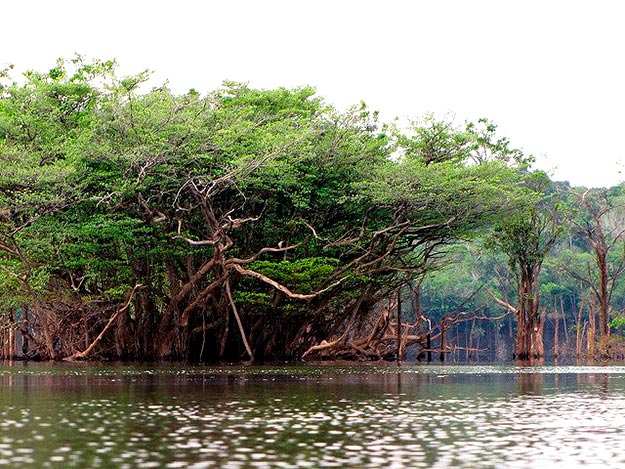Healthy forests are critical to providing clean water. Forests can positively impact the quantity, quality and filtration costs associated with a city’s water, sometimes even reducing the need for costly concrete and steel infrastructure.
The world’s major watersheds lost 6 percent of their tree cover on average from 2000-2014. Today, about 31 percent of the world’s watershed area is covered by forests. Deforestation in these watersheds, often caused by commodity and agricultural production, can contaminate water, fuel floods and drought, and lead to higher water treatment costs.
It’s fitting that the International Day of Forests (on March 21) and World Water Day (on March 22) fall next to each other, as the health of these important resources often go hand-in-hand. To celebrate this year, let’s look at just how big of a role forests play in providing clean water:
1. The Quality of Water
Erosion—when rainfall, runoff or wind detach soil particles—is a significant problem that affects both water quality and quantity.
Healthy forests act as a filter to keep pollution out of water. Strong roots anchor soil against erosion and material on the forest floor helps absorb nutrients and sediment. But when forests are disturbed and degraded, sediment flows into streams and pollutes water.
In the early 2000s, Colorado experienced wildfires that degraded forests along the Front Range. Extreme ash and debris from the fires made its way into key waterways, forcing Denver’s water utility, which serves 1.4 million people, to temporarily rely upon back-up reservoirs. Cleaning up this erosion alone cost Denver’s water utility $26 million.
2. The Availability of Water
Forests help control the water cycle by regulating precipitation, evaporation and flows. Layers of forest canopy, branches and roots can store and release water vapor, which controls rainfall. Forests can also help reduce the impacts of flood from storms by blocking and slowing down the flow of runoff.
Deforestation weakens this process, leading to irregular rainfall patterns including drought and flooding.
While deforestation may occur locally, its effect is global. According to Greenpeace, deforestation in Central Africa could decrease rainfall in the U.S. Midwest by 5-35 percent. Texas alone could see a 25 percent decrease in rainfall after Amazon deforestation, affecting agricultural productivity and other sectors.
3. The Cost of Water Treatment
Communities often rely on expensive water filtration infrastructure to ensure clean water. This cost often increases when erosion deteriorates water quality.
Relying on natural infrastructure like forests, as a complement to traditional built infrastructure, is proven to reduce water management costs and provides both economic and cultural benefits like recreational green spaces and fish and wildlife habitats.
New York City, for example, conserved forest and natural landscapes in the Catskills to save on water filtration costs. The city invested $1.5 billion to protect more than 1 million acres of mostly forested watershed area, ultimately avoiding $6-8 billion on the cost of building a water filtration plant.
Learn More About Protecting Natural Infrastructure to Improve Water Sourcing
Global Forest Watch Water (GFW Water) is a free global database and interactive mapping tool designed to help identify deforestation risks to watersheds and opportunities for natural infrastructure solutions. The tool can help downstream beneficiaries, financing and development institutions, civil society and research groups apply natural infrastructure as one of their strategies to enhance water security and improve watershed management.
Source: https://www.wri.org/
Dear User/Visitor! Please, answer on our questions: tick off one of the positions – your answer will make us able to improve our site and make it more interesting and useful!


